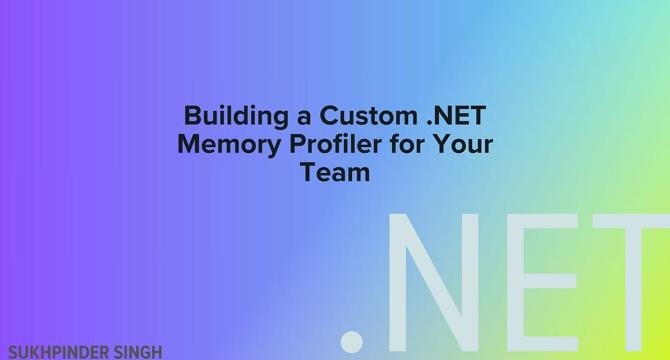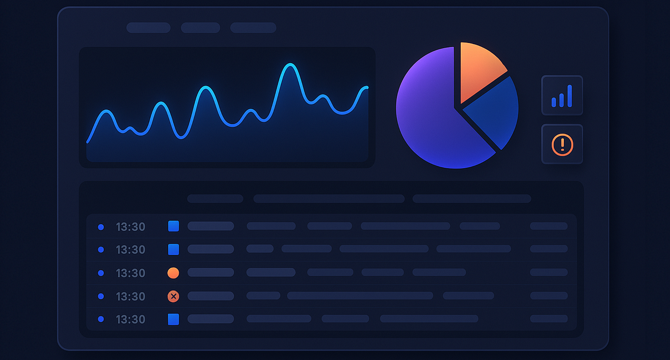Programming News
Dev
541

Image Credit: Dev
How Developers Can Avoid Burnout and Stay Productive Long-Term
- Developers can avoid burnout by pacing themselves and balancing intensity with recovery.
- Focusing on solving real problems rather than pushing out endless features can help prevent burnout.
- Working in a team that values communication and using the right tools to automate repetitive tasks are key in preventing burnout.
- Continuous learning with intention and creating systems that support well-being and growth are important for sustainable software development.
Read Full Article
25 Likes
Medium
114

Image Credit: Medium
Writing a Post-Processing Filter with Spring Boot for Custom Headers
- Filters in Spring Boot play a crucial role in processing HTTP requests.
- They allow injecting headers into responses without affecting business logic directly.
- Post-processing filters extend OncePerRequestFilter to handle response headers effectively.
- Headers added after controller execution provide useful metadata without risking response integrity.
Read Full Article
6 Likes
Dev
398

Image Credit: Dev
Building a Production-Ready Target Scraper: 5 Spiders That Actually Work in 2024
- Learn how a custom Target.com scraping solution simplified price analysis for a dropshipping business.
- The article discusses the challenges faced in scraping Target due to anti-bot measures.
- Details a 5-spider approach for deep data extraction from Target including product details and deals.
- Tech hurdles like dynamic content and proxy rotation are also addressed for effective scraping.
Read Full Article
23 Likes
Javacodegeeks
93

Image Credit: Javacodegeeks
Apache Camel vs. Spring Integration: Which to Choose for Enterprise Integration?
- When choosing between Apache Camel and Spring Integration for enterprise integration, consider their design philosophies, ecosystems, and learning curves.
- Apache Camel is a lightweight framework with a rich DSL and over 300 components, while Spring Integration is part of the Spring ecosystem with a focus on message-driven programming.
- Apache Camel offers Java, XML, and YAML DSLs, ideal for code-centric configurations, while Spring Integration provides XML and Java DSL with seamless Spring Boot support.
- Both frameworks support various Enterprise Integration Patterns, but Camel excels in protocol support and Spring Integration aligns closely with Spring projects.
Read Full Article
5 Likes
Discover more
- Software News
- Web Design
- Devops News
- Open Source News
- Databases
- Cloud News
- Product Management News
- Operating Systems News
- Agile Methodology News
- Computer Engineering
- Startup News
- Cryptocurrency News
- Technology News
- Blockchain News
- Data Science News
- AR News
- Apple News
- Cyber Security News
- Leadership News
- Gaming News
- Automobiles News
Dev
332

Image Credit: Dev
How I Hack a Hacker
- A cybersecurity analyst in Lagos recounts a phishing scam encounter via dubious email.
- Despite suspicion, curiosity leads to inspecting the phishing structure to analyze tactics.
- Investigation reveals a silent redirect technique used to gain access without passwords.
- The analyst shares how these covert attacks exploit session handling vulnerabilities for access.
- The account of hacking back the hacker unfolds in a detailed digital pursuit.
Read Full Article
18 Likes
Medium
417

Image Credit: Medium
ChatGPT for Productivity
- ChatGPT serves as a productivity partner, not just a chatbot, offering 10 time-saving prompts.
- One prompt involves requesting article summaries in bullet points, ideal for lengthy reads like blogs or research papers.
- Another prompt aids in drafting professional and warm email replies efficiently, reducing email-related stress and time consumption.
- The user shares their positive experience with ChatGPT, emphasizing its role in saving time and enhancing productivity in various tasks.
Read Full Article
25 Likes
Dev
313

Image Credit: Dev
Using LlamaIndex.TS to Orchestrate MCP Servers
- This post focuses on orchestrating Model Context Protocol (MCP) servers using llamaindex.TS in a TypeScript application.
- llamaindex.TS offers a modular framework while MCP enables tool interoperability and streaming for orchestrating AI services.
- The post discusses setting up the MCP client with Streamable HTTP for efficient communication and best practices for secure access.
- Orchestrating LLMs and MCP tools is simplified with llamaindex/tools, allowing dynamic tool retrieval and multi-agent workflows.
Read Full Article
18 Likes
Dev
224

Image Credit: Dev
Secure Note Manager in React - Part 2. Client-Side Login with Web Crypto and Redux
- Build a browser-based secure login page without backend using Redux and Web Crypto.
- Utilize in-memory storage with Redux for CryptoKey ensuring data disappears on reload.
- Implement secure login form authorizing users via master password and browser-based cryptography.
- Technique to trigger UI reactivity with Redux, ensuring secured, offline login experience.
- Vault access granted only upon presence of CryptoKey, ensuring secure data handling.
Read Full Article
13 Likes
Dev
220

Image Credit: Dev
Flame Graph Reveals Performance Truth Deep Analysis by Computer Science Student
- A junior computer science student shares insights on Hyperlane framework's architecture and design.
- The framework offers zero-cost abstractions, type safety, and context-driven architecture for robust web services.
- Features like middleware system, real-time communication, and memory optimization enhance performance.
- Detailed exploration of error handling, troubleshooting, and future directions highlight production excellence.
Read Full Article
13 Likes
Dev
322

Image Credit: Dev
Why I Disappeared for 2 Days (And What's Coming Next)
- Spent 2 days learning video editing for upcoming YouTube channel launch.
- Plans to focus on teaching iOS development through articles and YouTube.
- Continuing on Medium while expanding teaching through video content.
- Facing camera anxiety, starting with faceless tutorials to improve speaking skills.
- Invites others to join in the journey of real-world iOS development learning.
Read Full Article
19 Likes
Dev
407

Image Credit: Dev
WebSockets vs Server-Sent Events vs Polling: A Full Stack Developer's Guide to Real-Time Communication
- Building real-time web applications like chat or live tracking? Understand WebSockets, Server-Sent Events, and Polling.
- Polling is simple, SSE offers one-way communication, and WebSockets provide bi-directional power.
- Choose based on latency, update frequency, bidirectionality needed, and application complexity.
- Combine approaches for different features like notifications, chat, and background sync tasks.
- Consider MVP needs, dashboard tools, or interactive applications when selecting the right protocol.
Read Full Article
24 Likes
Medium
114

Image Credit: Medium
Building a Custom .NET Memory Profiler for Your Team
- The backend team faced memory optimization challenges while working on a multi-tenant analytics service.
- Common optimization techniques failed to resolve memory spikes and performance issues.
- Existing memory profiling tools like dotMemory and PerfView were found to be heavy and detailed for the team's needs.
- A custom .NET memory profiler was developed to provide the team with a lightweight and accessible solution for pinpointing memory wastage.
Read Full Article
6 Likes
Medium
301

Image Credit: Medium
Logging AWS ECS Workloads with Grafana Loki and FireLens
- Running containerised workloads on AWS ECS Fargate requires a proper logging solution such as Loki and Grafana.
- Loki and Grafana provide a lightweight, scalable way to collect, store, and visualize logs without relying on bulky tools.
- The guide explains how to connect Loki and Grafana to ECS Fargate using Amazon S3 for storage and Fluent Bit as the log shipper.
- Loki is compared to Prometheus, being lightweight, easy to scale, and cost-effective due to indexing only labels instead of full log content.
Read Full Article
18 Likes
Medium
322

Image Credit: Medium
The Rise of AI Agents: Why Autonomous Workflows Are the Next Frontier
- AI is evolving from reactive language models to autonomous agents that take action.
- Agents maintain context, set objectives, make decisions, and engage with tasks over time.
- Systems like AutoGPT and Devin demonstrate the shift towards AI agents as collaborators.
Read Full Article
19 Likes
Dev
220

Image Credit: Dev
Tauri vs. Electron: performance, bundle size, and the real trade-offs
- Choosing between Tauri and Electron for app development involves key performance considerations.
- Electron relies on Node.js, while Tauri leverages Rust for a native binary approach.
- Comparison involves factors like app size, startup time, memory usage, and architectural differences.
- Tauri's smaller bundle size and lighter memory usage make it favorable for specific tasks.
- Despite considerations, the choice ultimately depends on project requirements and team expertise.
Read Full Article
13 Likes
For uninterrupted reading, download the app